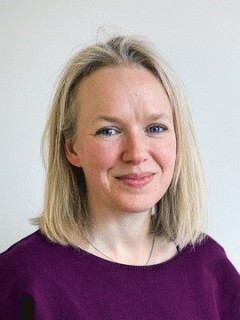Traditional approaches to solving the big challenges society faces focus on understanding the causes to design interventions that help fix the problems. There is a strong focus on what's wrong with the individual, situation or services.
For example, knife crime is framed by what young people are lacking — feeling safe in communities, investment in youth services, parental authority, awareness of risks and consequences, and social norms of carrying knives. With multiple 'deficits' it is logical to think that, if fixed, the problems should be resolved. Unfortunately, interventions often do not deliver the change that is wished for. In part this is because behaviour change is incredibly hard, but also because we are missing an important catalyst for change: what's strong.
Deficit focus
There are countless other examples where a deficit focus dominates, for example: homelessness (deficit of home), poverty (deficit of money and support), loneliness (deficit of social connection), staff unhappiness (lack of resources, flexibility or support of work). The deficit focus can also be seen in how commercial briefs are framed. If a brand is in decline we investigate the cause of lack of user loyalty, if a shop gets low satisfaction scores we explore what's wrong in physical, staff and product environment.
Obviously a deeper understanding usually points to a complex set of influences and events, but the fact remains that we tend to focus on what's wrong. At the 2019 Service Design in Government conference an innovative approach to problem solving was showcased. Cormac Russell shared examples of his work using an Assets Based approach and advocated for wider application in the service design world. It could also bring fresh thinking to how we tackle briefs in qualitative research.
How does it differ from traditional approaches? Being assets focused means grounding work in a belief that all individuals and communities have gifts that can contribute to solving problems. This approach always looks at what people already have, what's strong.
Deficit approach focus: what people lack; what people need; people's problem behaviours; what will fix the problem Assets based focus: what people have; what people value; what they have used to overcome adversity; what they want to do; what organisations can give them to catalyse change.
At the heart of an assets based approach is a belief in helping people to solve problems rather than fixing problems for them. Moving beyond co-creation to co-production.
Done to --> Done for --> Done with --> Done by
A powerful example is found in a novel approach to caring for people as they age. A deficit approach will focus first and foremost on user needs to create services that alleviate decline in physical or mental capabilities, but focusing solely on the negative can miss opportunities. As Cormac puts it: “we thought the high watermark was independent living but independent living is lonely living.”
A more innovative assets based approach features in intergenerational care solutions that bring together attendees of nurseries and care homes. Intergenerational care delivers impressive outcomes by focusing on assets that both children and older people have, and builds solutions from what's already within the community. London Sport is about to embark on an assets based approach to initiative and community building after seeing the benefits. After all, a bottom-up community and assets based approach is more cost-effective and sustainable in the long run.
An assets based approach could be applied to the challenge of workplace mental health. Some 84% of employees have experienced physical, psychological or behavioural symptoms of poor mental health where work was a contributing factor (Deloitte Center For Health Solutions 2017). The negative issues that contribute to these problems should not be underestimated, but by taking a strength based approach employers and employees could also identify what is strong, what assets the staff/community have to tackle the problem and how staff want to solve the problem.
Assets based approach and qual
So how can we take advantage of an assets based approach in our qualitative work? As a first step, we should reframe our briefs: too many briefs are written with a deficit based framing. At the outset of projects we should ask: how can we build in strengths from the outset?
Secondly, during projects you can build an assets inventory, working with stakeholders, partner organisations and participants to develop a picture of what already exists and can be drawn on, including values, communities, services, skills, products. Once you have your assets inventory you can look for opportunities to support connections between them and empower communities to harness and build their value.
Thirdly, during fieldwork there are some simple questions to use: what do people value? Where do they currently get support from? Ask them to tell stories about when they've overcome adversity and what helped them? It's a different mindset, but a worthwhile one. We can use this alternative way of thinking to ground our work in the gifts or strengths that are inherent but that aren't being used or deployed. What do we have to lose?


